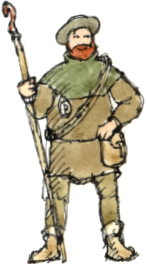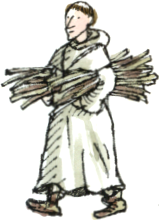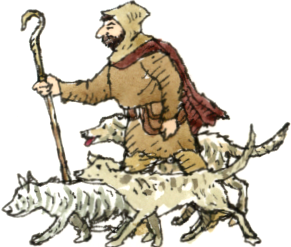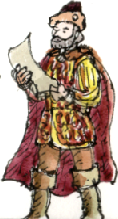previous
| home page
| this month| e-
Manorfields Folk
Richard Bell’s Wild West Yorkshire nature diary, Saturday, 21st February 2009
previous
| home page
| this month| e-




From Ordnance Survey Map, (Crown Copyright) & the Horbury Enclosure map, 1809, annotated by Ken Bartlett after the original in the Public Records Office.
The Horbury Pinder rounded up stray farm animals and impounded them in the Pinfold on Northgate.
‘I have sought with my dogs
All Horbury Shrogs,
And of fifteen hogs
Found I but one ewe.’
THE 3 SHEPHERDS
in The Second Shepherd’s Play
of the Wakefield Cycle of Mystery Plays soon realise that if sheep have
gone missing to the south-
In this Mystery Play -
The West Field
I recently tried superimposing the
medieval field patterns of Horbury onto a modern map. The shape of the modern
town closely follows the three-


Horbury Hall,
still standing opposite the church, has connections with the Amyas
family and is said to have belonged to the man who kept the accounts of
Sandal Castle
in medieval times.
In 1315 John, Clerk of Horbury, was fined sixpence for removing green wood from the Lord of the Manor’s deer park north of the neighbouring village of Ossett.
As a clerk, John was one of probably only a few people in the village who could read and write. He would have been in holy orders but probably didn’t wear the white habit of a Cistercian monk as I’ve shown him in my cartoon!
Pax nobiscum!
That’s a penny fine for one stray sheep!